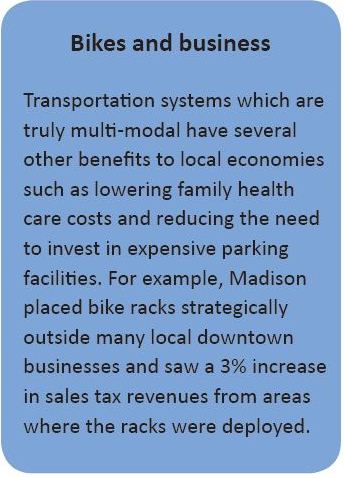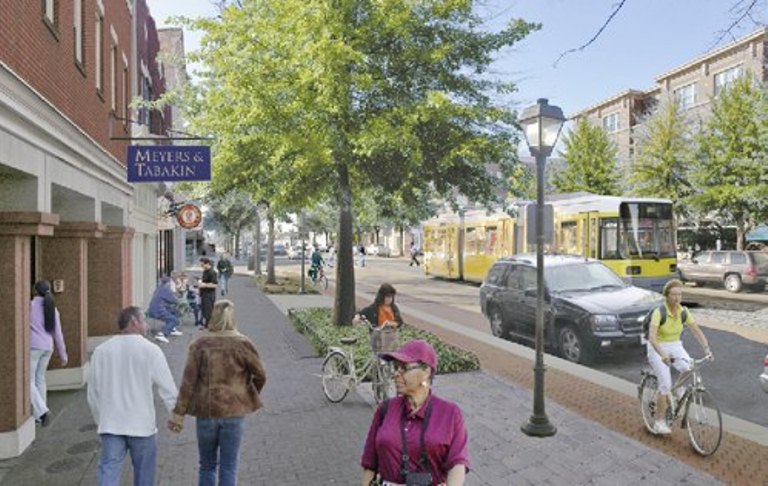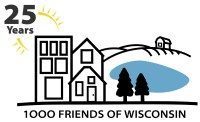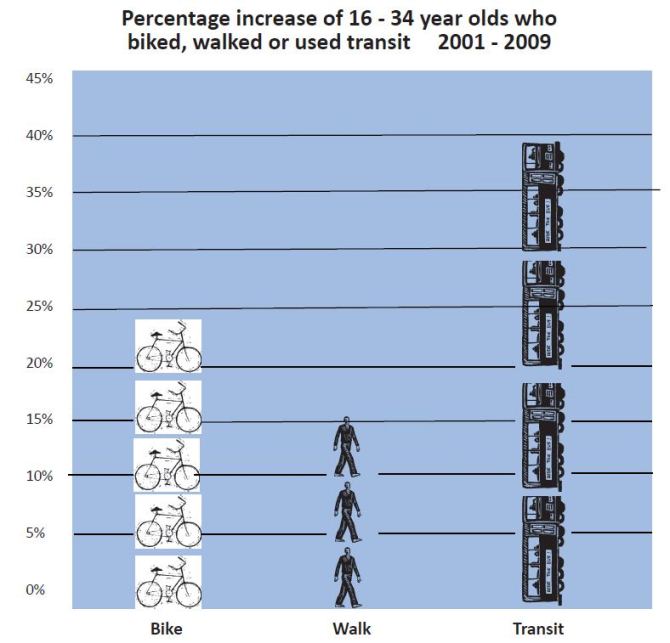Reason 5. Changing demographics show that young people want to walk, bike and take transit – we must invest in our future and meet these needs.
Demographic information from across America shows that young people want to live and work in places where they can walk, bike and take transit to work. Studies show that communities, which invest in strong biking, walking and transit infrastructure, have attractive downtowns, which encourage businesses and bring about an improved quality of life.
 • Infrastructure investments in walking and biking are very cost effective – bike lanes on an average cost less than $5000 per mile, which is a tiny fraction of the cost of building and maintaining an automobile lane.
• Infrastructure investments in walking and biking are very cost effective – bike lanes on an average cost less than $5000 per mile, which is a tiny fraction of the cost of building and maintaining an automobile lane.
• An extensive study by the University of Massachusetts found that bike and pedestrian infrastructure projects create 46% more jobs than roads built strictly for cars.
• Increased bike facilities make roads safer, reducing automobile crash and fatality rates.
• Finally, bike and pedestrian facilities improve air quality, and reduce dependence on polluting fossil fuels derived from foreign oil.
Unfortunately Wisconsin’s transportation network is almost exclusively car focused, with over 90 percent of all funding going towards building and maintaining roads. There is a huge social cost involved in automobile centric transportation – from subsidies to road construction, public parking spaces and oil companies. It is time for the state to recognize the multiple benefits of a balanced transportation system and invest accordingly.

